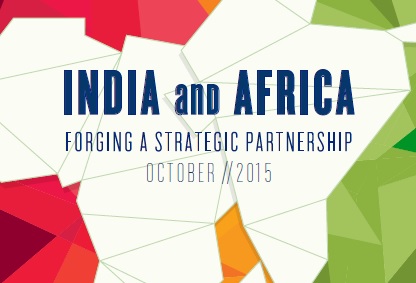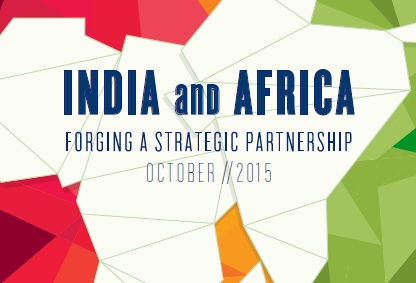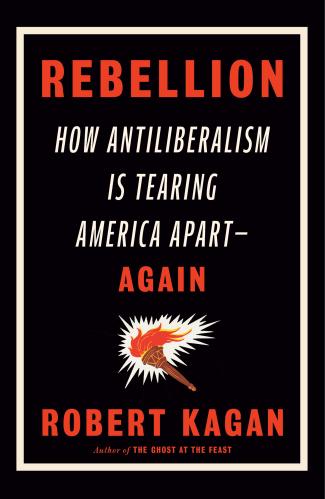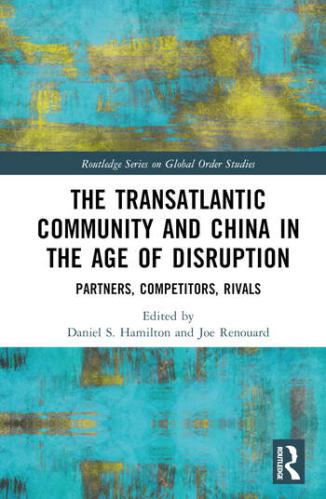Content from the Brookings Institution India Center is now archived. After seven years of an impactful partnership, as of September 11, 2020, Brookings India is now the Centre for Social and Economic Progress, an independent public policy institution based in India.
The chapter is part of a briefing book ‘India and Africa: Forging A Strategic Partnership’ edited by Dr. Subir Gokarn, Dr. WPS Sidhu and Shruti Godbole.
Africa’s development has followed several phases and ups and downs since independence. We are now at another crucial turning point – but what is clear is that Africa is becoming more and more integrated into the global economy and also exercising greater control over its own economic destiny. Over the last decade Africa grew faster than the global economy and in some periods faster than East Asia, thanks to a commodity boom, increased political stability and decline in conflicts. Trade has driven the rapid growth in Africa over the last decade – especially growing trade with China and India- but also with other emerging economies such as Brazil, Indonesia, Malaysia, Saudi Arabia, Thailand and UAE.
In the first three decades after independence Africa turned inward with import substitution policies like in many ex-colonial countries. Africa had huge potential and promise but import substitution combined with public sector enterprises held back African growth. The Cold War divided much of Africa into the U.S. or Soviet camp although some countries followed a policy of non-alignment. Africa grew rapidly in the 1970’s as commodity prices rose but had to adjust rapidly in the 1980’s as global commodity prices fell. Structural Adjustment policies were imposed on Africa led by the IMF and the World Bank in return for more international aid – but many believe ended up holding back growth and increasing poverty. Dambisa Moyo has described this as “dead aid”.
While this was perhaps too harsh – there is sufficient evaluated evidence that the structural adjustment programs based on a so called “Washington Consensus” with a one size fits all approach has done more harm than good. At the same time, the Soviet Union collapsed and Africa saw growing internal conflicts, as both the US and the Soviet Union turned attention elsewhere. The 1990’s were considered by many to be a lost decade for Africa- when growth fell, conflicts rose and trade stagnated.
Since the beginning of the 21st century the economic prospects of Africa have picked up considerably. Trade with China has jumped to over $300 billion, as against trade with the EU stuck at around $200 billion, less than $100 billion with the USA and less than $50 billion with Japan. So China has emerged as a major global partner of Africa. India too has increased its engagement with Africa hugely in the last 15 years with trade reading almost $100 billion. The Western model focused more on aid and less and less on trade. Aid also had pernicious effects such as decline in African agriculture as food aid was dumped onto the continent and the structural adjustment policies which reduced trade barriers prematurely led to de-industrialisation. Increasing trade with the emerging economies has helped lift Africa’s growth rates considerably into one of the fastest regions in the world. With the Chinese slowdown in 2015, Africa’s growth will undoubtedly slow down somewhat, unless other growth avenues are found.
FDI into Africa has also been increasing – particularly in Sub Saharan Africa – especially as conflict has raged in many parts of North Africa in the last few years. Much of FDI was in the resource sect or and concentrated in a few countries. But more recently the share of FDI going into manufacturing and services – as opposed to FDI into natural resources has also been increasing. Much of this is due to improved investment climate in many African economies. The bulk of it is for manufacturing assembly, telecommunications, pharmaceuticals and services. Indian investment into Africa has traditionally been in the natural re sources sector but is increasing in pharmaceuticals and automobile assembly.
While there is huge debate over China’s presence in Africa, it is one player- albeit a large player- among many. China’s trade with Africa is the largest in the world but this year India’s trade with Africa will rise to almost $100 billion and is increasing faster than China’s. In terms of FDI, western nations have far larger amounts invested in Africa compared to China and India’s FDI in Africa is almost at levels reached by China.
Not all countries in Africa gain from China. African countries that gain from trade with China are oil exporters; ore and metal exporters; cotton exporters; and log timber exporters. Although the total trade volume between China and Africa has grown rapidly, the speed of such growth has slowed down – from 19.3 percent in 2012 to 5.9 percent in 2013. Such a rate is also lower than the growth of China’s overall foreign trade: 7.6 percent in the same year. While the broad context is the slowdown of China’s economic growth and of its foreign trade, exports by Africa suffer in particular because China’s demand for raw materials has declined.
China has increasingly become conscious of its image in Africa and concerns that have been raised over environmental and social safeguards as well as labour issues. Cases of human rights abuses have arisen from Chinese-African co-operation. African workers have protested against ill-treatment and poor pay by Chinese companies, as well as the influx of Chinese workers who took away local jobs. In July 2010 , hundreds of African workers at a Chinese-owned Zambian mine rioted over low wages.
Many existing studies focus on whether China’s larger involvement in Africa benefits or hurts the region overall. While some scholars and African policymakers have claimed that more trade between China and SSA has benefited the region, others have warned about losses owing to greater exposure to commodity price fluctuations and reduced demand for African production because of competition from China.
With the negative past history of Western engagement with Africa and a somewhat controversial growing – albeit now more slowly Chinese engagement with Africa, India has a unique opportunity to up its engagement with Africa on a platform of mutual benefit and co equal relationship. As it increases its engagement with Africa, it can do more to avoid the mistakes others have made.
One of the lessons of the past is to be more cognizant of the fact that Africa is a continent not a country and has huge diversity in language, climatic conditions, resource base and levels of development. The upcoming India Africa Summit is an opportunity to signal India’s approach to groups of countries – low income subsistence, resource rich, industrialized commodity importers, and land abundant agricultural economies.
Second, much of Western dominated aid was excessively focused on social sectors to the neglect of infrastructure. The Poverty Reduction Strategies followed by the IMF and the World Bank in Africa had three fourths of aid designated for social sectors with one fourth for infrastructure. In Asia Poverty Reduction Strategies in which national governments had greater ownership, the share of social sectors and infrastructure was closer to 50:50. Physical and IT Connectivity will play a big role in Africa’s development and trade. China has placed Africa as an important part of its new Silk Road strategy with a strong emphasis on infrastructure investment. India must counter this strategy with a coherent engagement with Africa which includes the SAGAR project but must go well beyond that if India is to have a meaningful engagement with the whole of Africa.
Third, Indian investments must visibly help create jobs and skills in Africa for the engagement to be seen to be mutually beneficial, and not a scramble for Africa. Indian companies must partner with local firms to build local capacities and leave lasting benefits. The Chinese approach of bringing in Chinese labour to build “trophy” projects will not work well in the long run. India must see this engagement with Africa as an engagement of building a relationship over the 21’st century, not a project for small gains in cheap commodity imports and “trophy” projects. India must build a relationship which is seen by the people of Africa as mutually beneficial – not just a set of commercial transactions that benefit a few.
India was created out of Africa millennia ago. Africa has a large Indian diaspora. But India and Africa while increasing engagement in this century have only scratched the surface of what could be a huge and mutually beneficial relationship. African countries are taking their economic destiny more and more in their own hands and India’s engagement built on mutual benefit and not exploitation can show the way forward for the rest of the world. The Third Africa Summit provides an opportunity to start on this path.








